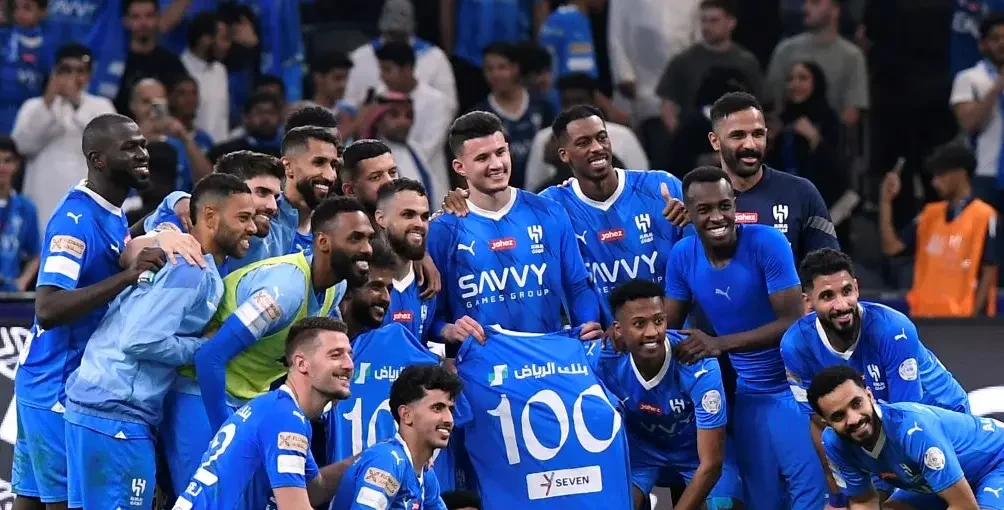When people speak about Asian football giants, one name consistently commands respect and admiration — Al Hilal Saudi Football Club. Popularly known simply as Al Hilal, this Riyadh-based club is not just one of the most successful football clubs in Saudi Arabia but also one of the most decorated in Asia. Its name, which means “The Crescent” in Arabic, is synonymous with glory, consistency, and a deeply rooted football culture that resonates with millions.
The Birth of a Giant
Al Hilal was founded in 1957 by Abdul Rahman Bin Saad Bin Saeed. Originally named the Olympic Club, it was renamed to Al Hilal two years later by King Saud bin Abdulaziz, who found the original name too foreign and suggested a name more representative of Arabic heritage. This royal blessing set the tone for Al Hilal’s status as the “royal club” — a club beloved by the monarchy and the masses alike.
From its earliest days, Al Hilal has enjoyed unwavering support and significant backing, allowing it to attract top local talent and, over time, foreign stars who helped elevate the club’s status far beyond national borders.
Domestic Dominance
In Saudi football, Al Hilal is an institution. They hold the record for the most Saudi Professional League titles, having won it more than 18 times. Their consistent performances make them the club to beat every season. But it’s not just about league success. Al Hilal has lifted the King’s Cup, the Crown Prince Cup, and the Saudi Super Cup multiple times, building a domestic trophy cabinet unmatched by any other Saudi club.
Their fierce rivalry with Al Nassr FC, dubbed the Riyadh Derby, is one of the most intense football rivalries in Asia. Whenever these two sides meet, the atmosphere is electric, the stadiums are packed, and millions tune in, not just in Saudi Arabia but across the Arab world.
Continental Glory
While domestic success is impressive, what truly distinguishes Al Hilal is their consistent dominance on the Asian stage. The club is the most successful team in the history of the AFC Champions League, having won it four times (as of 2023). Their triumphs in 1991, 2000, 2019, and 2021 have cemented their place as kings of Asia.
Their 2019 victory was especially significant. After a long drought, Al Hilal defeated Japan’s Urawa Red Diamonds in the final, avenging their loss in the 2017 final. The win secured them a spot in the FIFA Club World Cup, where they represented Asia with pride, reaching the semi-finals and putting up a strong fight against top European and South American clubs.
Star Power
One reason for Al Hilal’s sustained success has been its ability to attract and retain top talent. Locally, they’ve been home to Saudi football legends like Yousuf Al-Thunayan, Sami Al-Jaber, and Mohammad Al-Deayea. These players have not only shone for Al Hilal but have also been pillars of the Saudi national team.
In recent years, Al Hilal has aggressively recruited international stars. Big names like Bafétimbi Gomis, Sebastian Giovinco, and André Carrillo have donned the famous blue shirt, bringing flair, experience, and global attention to the club. Their presence has elevated the Saudi Pro League’s profile, making it more competitive and marketable.
The club’s recruitment strategy reflects a broader trend in Saudi football, with significant investment being made to attract world-class talent. The Saudi Vision 2030 initiative, aimed at diversifying the economy and promoting sports, has further fueled Al Hilal’s ambitions.

A Global Brand
Al Hilal’s influence goes far beyond the pitch. It is a cultural institution. Its fan base, estimated in the millions, is among the most passionate and loyal in the Arab world. The club’s matches routinely draw massive crowds, and its social media presence rivals European giants, engaging fans with dynamic content and behind-the-scenes glimpses into the players’ lives.
In recent years, Al Hilal has actively worked to expand its brand globally. Participation in international competitions like the FIFA Club World Cup, along with high-profile friendlies against European clubs, has showcased the club’s ambition to be recognized on the world stage. Their sponsorship deals and partnerships reflect a modern approach to club management, aligning them with global football business standards.
Community and Youth Development
Beyond trophies and fame, Al Hilal plays a significant role in community development and youth training. The club’s academy is one of the best in the region, producing generations of players who go on to represent both Al Hilal and the Saudi national team. Their commitment to nurturing young talent is not just about securing future stars but about fostering a football culture that empowers Saudi youth and keeps the sport alive at the grassroots level.
Challenges and the Road Ahead
Despite its success, Al Hilal faces challenges. The increased competitiveness of the Saudi Pro League means domestic rivals like Al Nassr, Al Ittihad, and Al Ahli are constantly strengthening. Internationally, clubs from Japan, South Korea, and China are also vying for Asian supremacy.
However, with strong leadership, financial backing, and a vision aligned with Saudi Arabia’s broader goals for sports development, Al Hilal is well-equipped to maintain its dominance. The club’s participation in the newly expanded Club World Cup and continued investment in facilities, coaching, and player welfare signal that the best may yet be to come.
Conclusion
Al Hilal is more than just a football club. It is a symbol of Saudi pride, resilience, and ambition. Its history is filled with iconic moments, legendary players, and unforgettable matches. But what truly makes Al Hilal special is its ability to inspire — on and off the pitch. For millions of fans, the blue crescent is a beacon of hope and joy, uniting people across cities, regions, and generations.
As Saudi football continues to grow on the global stage, Al Hilal will undoubtedly be at the forefront, carrying the dreams of a nation and showing the world that when the Crescent rises, it shines brighter than ever.


